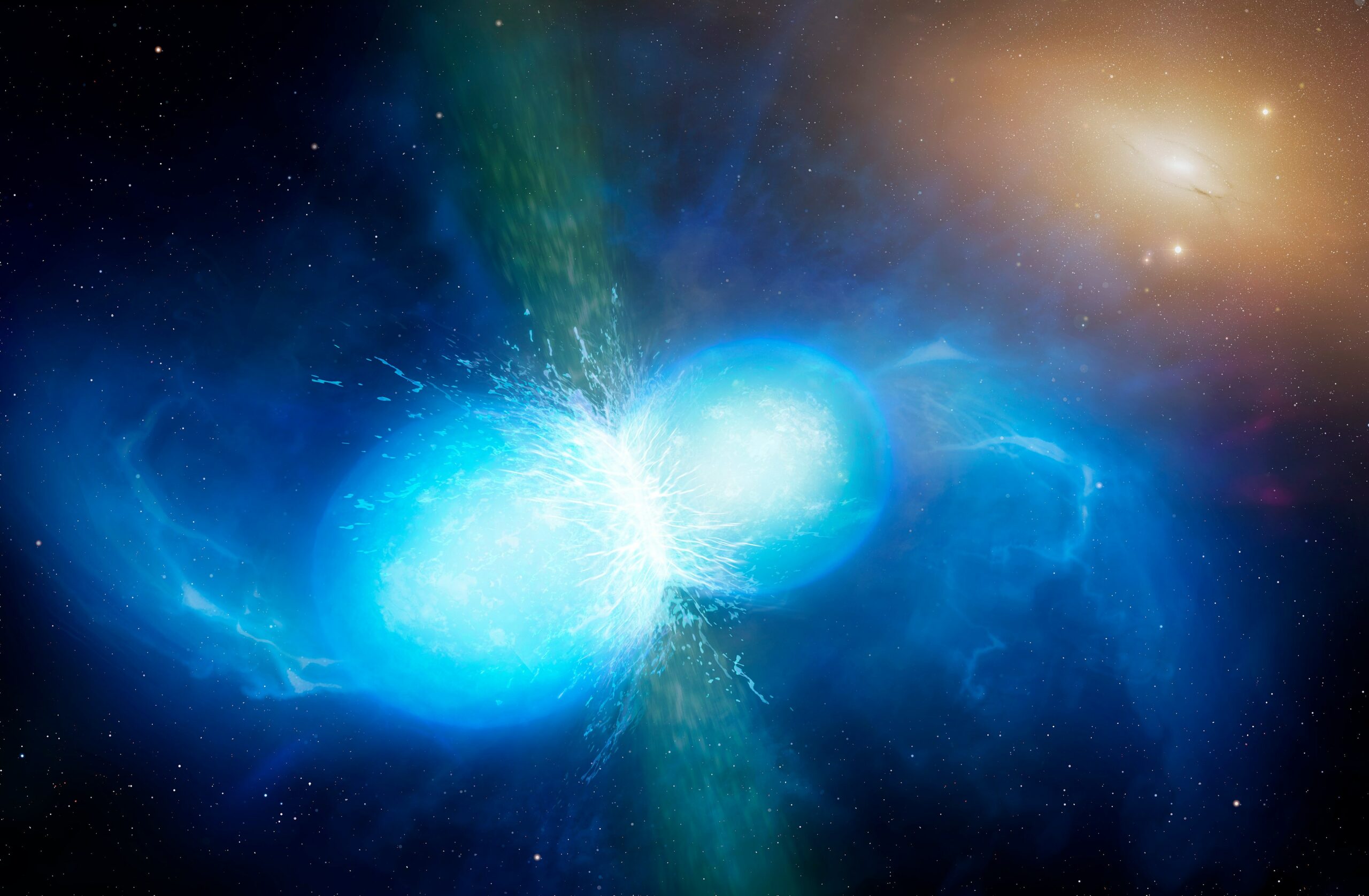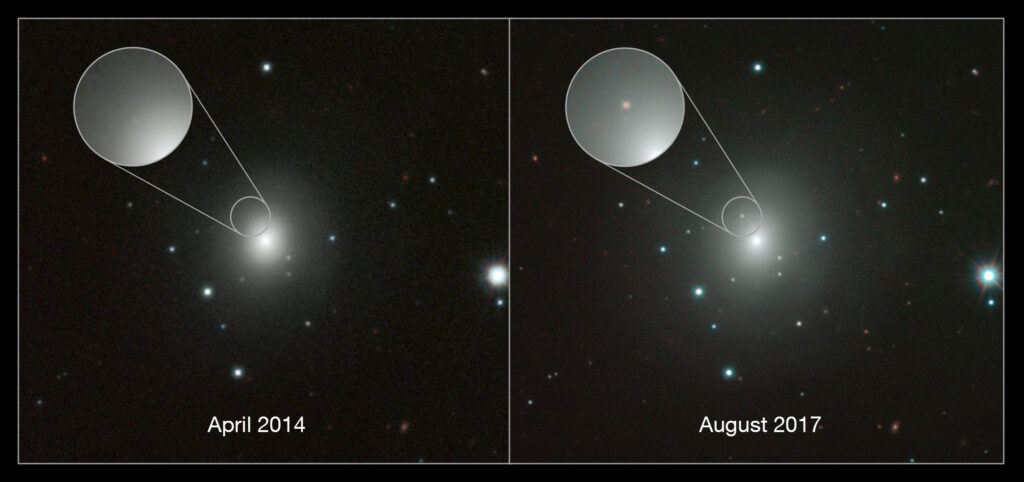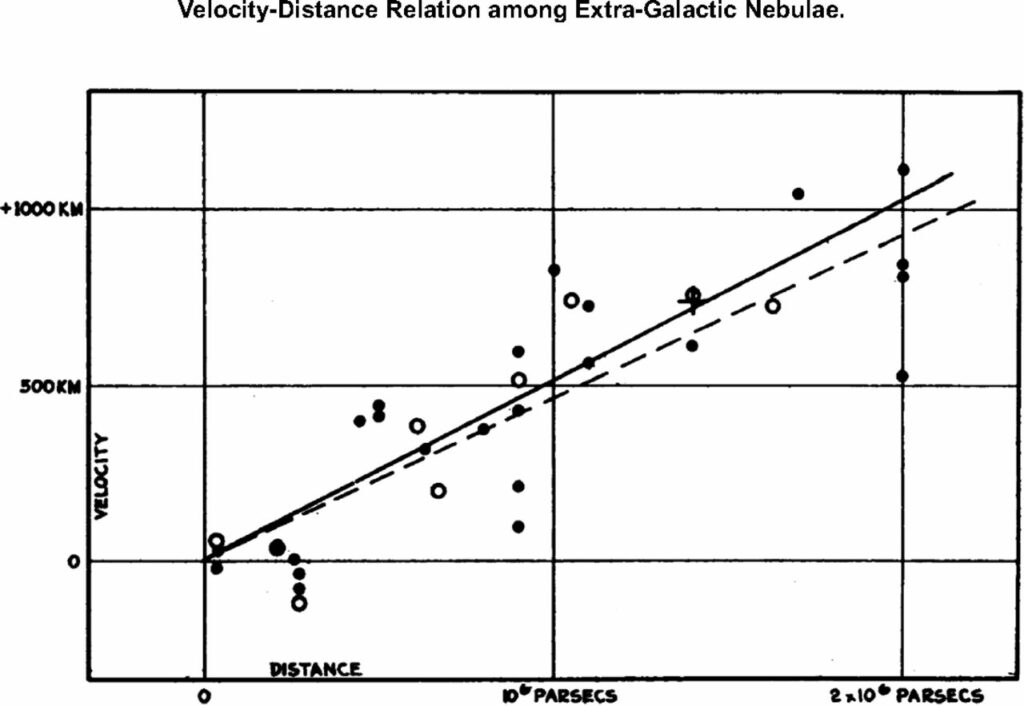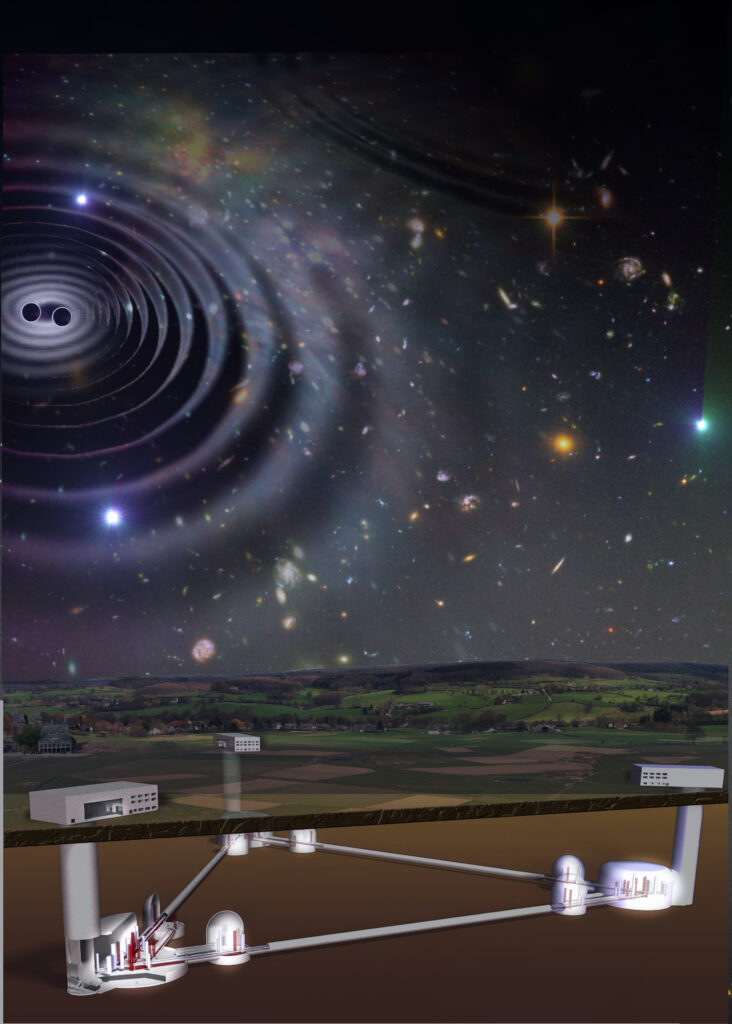Amazing Cosmic Sirens and the Expansion of the Universe
Crisis in Cosmology! Check out how gravitational waves can be used as cosmic standard sirens in the difficult measurement of the Universe’s expansion rate, known as the Hubble constant.

Cosmic Collisions and Gravitational Waves
One of the most amazing cosmic events that could be taking place right now is the collision of neutron stars and black holes! But wait, what are these things? Neutron stars are the smallest and densest stars known (for more details see this post). Black holes are regions in space-time where the gravity is so strong that even light cannot escape.
Both neutron stars and black holes are the result of the “death” of massive stars. It is, by the way, an impressive death in a supernova explosion. Black holes can be produced in other ways (check out this article to learn more about them). Black holes were also the topic to win the 2020 Nobel Prize in Physics.
Now that we know what these things are, imagine that from time to time, these objects happen to be so close to each other that they start to interact gravitationally, with one attracting another. This kind of cosmic dance will end in a great collision and merging of these objects (see figure above).
It doesn’t end there! As a result of this collision, there is the emission of the so-called gravitational waves, which are nothing more than ripples in the fabric of space-time (see animation below). German physicist Albert Einstein predicted gravitational waves in 1916. This phenomenon is very similar to the effect we see when throwing a rock into a calm lake and where we see ripples forming on its surface.

Like a sound wave, gravitational waves have a frequency (pitch: low/high) and an amplitude (volume: quiet/loud), and these properties store information about the masses of the objects involved in the collision and theirs distance from us. Since we can accurately predict the amplitude of such waves and nothing too crazy happens between different collisions, we say that gravitational waves are “standard sirens”, which allow us to determine the distance at which the collision took place.
Bright and Dark Sirens
Do you think it stopped there? Not really. In 2015, the LIGO collaboration made the first direct detection of gravitational waves, an event known as GW150914, which resulted from the merger of two black holes. Researchers involved in this discovery won the Nobel Prize in Physics in 2017. That same year, another extraordinary event took place: the LIGO/Virgo collaboration detected the collision of two neutron stars.
Then, LIGO/Virgo sent an alert to astronomers around the world to turn their telescopes towards this event. And for the first time, it was possible to detect the light resulting from this great cosmic collision. Several groups, including German astrophysicists, participated in this discovery, by using instruments from the European Southern Observatory (ESO) to obtain images of the event, which became known as GW170817 (see figure below).

A simple way to visualise what happened: imagine that you are in a dark room and a firecracker explodes. The noise and light will let you know the exact location of the explosion. Now, if a firecracker explodes, but no light appears, you’ll probably look in the right direction where it came from because you heard the noise, but you won’t be sure of its exact location.
In the first case, we have the representation of the so-called “bright standard sirens”, which are the gravitational waves resulting from the collision of two neutron stars in which light is emitted. In the second case, we have the “dark standard sirens”, which are the result of the collision of two black holes, therefore, without emission of light.
Note that we could have the case of the collision of a neutron star and a black hole, which could have the emission of light, as in the case of bright sirens, but this hypothesis has not yet been confirmed. In any case, we are in the era of multi-messenger astronomy with gravitational waves!
And the Expansion of the Universe?
We know that the Universe is expanding at an accelerated rate. That means galaxies are moving away from each other and become redder, a phenomenon that astronomers call redshift. The redshift indicates the “recession velocity” (v) of the extragalactic objects, that is, the speed at which they move away from us as a result of the expansion of the universe.
In 1929, the American astronomer Edwin Hubble noticed that there was a linear relationship between the recession velocity of galaxies and their distance (d), where more distant galaxies move away faster than galaxies closer to us (see figure below). This relationship, called Hubble’s Law, is described by v = H0 × d, where H0 is known as the Hubble constant and tells us how fast the Universe is expanding.

Crisis in Cosmology: The Hubble Tension
Currently, determining the value of H0 has been one of the major topics in Cosmology (the research area that studies the origins, content and evolution of the Universe). On the one hand, some measurements of the early Universe made with the Cosmic Microwave Background Radiation (CMB) find a value for H0 of 67.4 km s−1 Mpc−1. On the other hand, measurements of the late Universe made with supernovae find a value for H0 of 73.0 km s−1 Mpc−1. This disagreement between the measurements became a long-standing crisis in Cosmology, and is commonly called “the Hubble tension”.
If both of these measurements are correct, this could indicate that there is new physics and we would need to find an explanation for why the Universe is expanding more rapidly at the present time than in the past. That would be pretty cool and all, but how do you know which of these two types of measurements are correct? We need a cross-check!
Standard Sirens to Solve the Crisis?
To know which measurement is correct, we need to obtain the value of H0 in a different and independent way. And this is where gravitational waves are starting to play a role as an alternative way to measure H0!
Using the bright standard sirens observations from telescopes on Earth, we know exactly the redshift of the host galaxy of this collision. If we know the host galaxy’s redshift, we also know its recession velocity. Then, together with distance information from LIGO/Virgo, we can use Hubble’s Law to determine H0!
Cool, but so far LIGO/Virgo has only observed one bright standard siren event (okay, two … but we’ve only been able to observe the light of one of them: GW170817). To try to get around this situation, scientists decided to also use the dark standard sirens for these H0 measurements.
For dark standard sirens we are not sure in which galaxy the collision happened, we only roughly know the region where it occurred. Then, all galaxies in that region are possible hosts of the collision. But we can use these galaxies and theirs redshifts in a statistical technique to obtain the value of H0.
The Future is Bright (and Dark)
LIGO/Virgo observed about a dozen dark standard sirens, which is better than one, but still not enough to have an accurate measurement of H0 via gravitational waves. We need hundreds of sirens to have an accurate H0 measurement. We need to detect more collisions! Currently LIGO is closed for business, and will only reopen at the end of this year. But even then, it won’t detect enough collisions! What do we do?

Calm down! Luckily, there are other gravitational wave detectors that will soon join the LIGO/Virgo network, like KAGRA in Japan. In a few years, we will also have ZAIGA in China and LIGO-India. For the 2030’s, we have even more futuristic detectors like LISA (launched into space), the Cosmic Explorer (the largest gravitational wave detector ever made) and the Einstein Telescope (an underground detector, see figure above, likely to be built in Germany). In a few years, with all these new detectors working, cosmic standard sirens (bright and dark) could help to resolve the crisis over the value of H0, and consequently shed light on the question of the accelerated expansion of the Universe.
Note: this is a translated and updated version of the author’s original post “Sirenes Cósmicas: das Ondas Gravitacionais à Expansão do Universo”.

















